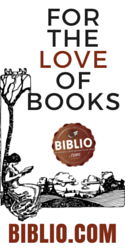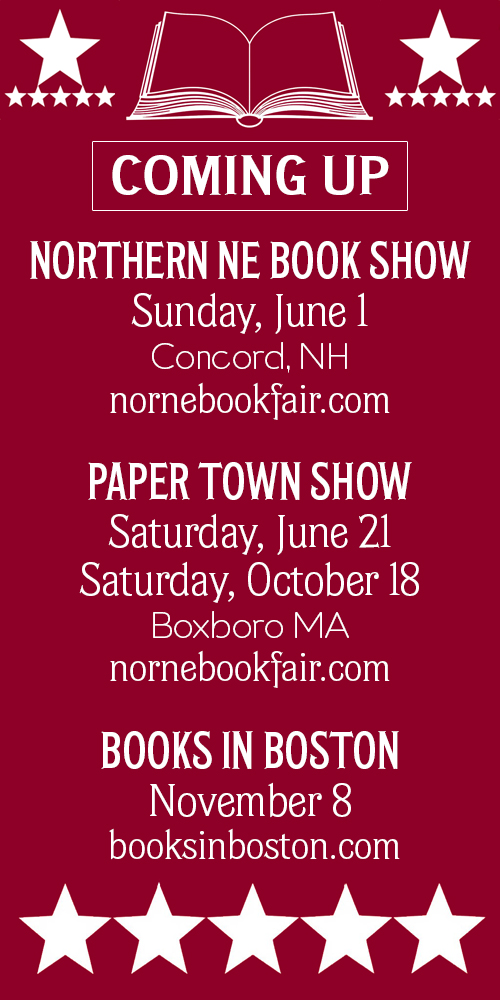On the Describing of Books
In the middle of the 17th Century, John Milton (1608-1674) produced the pamphlet Areopagitica (1644) whose title, derived from Areopagus, the Hill of Ares (Mars), the seat of the highest judicial tribunal of Athens, suggests not so much that Milton was picking a fight as that he saw his subject as worthy of such a tribunal. A Speech of Mr. John Milton for the Liberty of Unlicensed Printing to the Parliament of England, it is an attack on Literary Censorship. Milton wrote the sonnet On His Blindness in 1655, when he was only forty-seven, but he saw what he was saying in this unique and magnificent piece of prose.
Each issue of Firsts – The Book Collector’s Magazine contains their “Quick Reference Guide to Grading Books,” prefaced thus: “Within the general descriptions below there is latitude for individual differences in grading standards. Part of the process of becoming an informed collector is learning how various professional booksellers grade their offerings.” That is very true. The tone of the guidelines that follow seems to me rather pontificating, but that may well be appropriate in these days of e-bay and the internet, wherein (I have been told) sloppy, inaccurate, even misleading descriptions abound. However, it puts me in mind of Milton’s words in Areopagitica: “Promiscuous reading is necessary to the constituting of human virtue,” and he adds that the attempt to keep out evil doctrine by licensing is like “the exploit of that gallant man who thought to pound up the crows by shutting his park gate.” It is not my purpose here, facetiously or otherwise, to defend the howlers we occasionally see in booksellers’ catalogues (including my own), or to encourage promiscuity in the grading or describing of books offered for sale; but I do see an analogy between Firsts’ Reference Guide and censorship. Guidelines I welcome, but I wouldn’t want to be governed by a decree of Congress when it comes to describing – or grading – a book. Actually, in my own catalogues (October’s will be my 30th annual) I avoid “grading” (VF, F, VG, G+, G, G-) in favor of detailed, sometimes laborious if not tedious descriptions. In thirty years I have only once had a book returned on the ground that I had not “graded” it properly.
Recently I received a well-meaning but unprofessional catalogue of a private collection in which almost every item was described as creased/soiled/stained/faded/torn, etc, “else very good.” Apart from identifying true first editions and pricing them, describing books is the trickiest, most exacting corner of this tri-cornered profession. Years ago in frivolous mood I spoofed it in one of my catalogues, offering a “First Edition in the original soiled cloth with bumped corners, faded spine and torn gutters, with a demi-tasse ring almost invisible on the front cover, hinges slightly useless. A lousy copy, else fine.” Two readers wrote to chastise me. A more generous dealer, Peter Stern in Boston, wrote to ask: “Was that a joke, Charles, or how long after 6 PM? ”
In the August 1991 issue of Firsts, Peter Stern and M. Taylor Bowie compiled a collection – or compilation – of “Catalogue Oddities, or You Don’t Need a License to Be a Bookseller.” Among them (anonymously) was one from a catalogue of mine, offering Wodehouse’s Uncle Fred in the Springtime: “First English Edition. A scarce title – much scarcer than its American counterpart, and very much scarcer than other Jenkins titles of roughly the same vintage. The dust wrapper is unquestionably scarcer still – and alas, this copy lacks one.” Stern’s note: “We know this bookseller, and think, or at least hope, he meant to be funny.” A generous hope and, I hope, a hope well-founded.
But you don’t need a degree in English to be a bookseller, either. In the Times Book Review for October 7, 2007, Bauman Rare Books offered “The Workes of Geoffrey Chaucer, 1551…. One of fewer than nine known copies.” A rare book, I daresay. How many fewer than nine known copies can there be? I’d want an answer to that before I dropped $55,000.00 on this one.
A catalogue received last year from a distinguished dealer whom I have known for a long time offered the following: “Rowling, J.K. Harry Potter and the Goblet of Fire, Accompanied by a Related Magazine Artist, Mary GrandPre…. This is one of the great rarities in Harry Potter collecting, as it is only one of 25 special copies which features an original full-page signed drawing of Harry Potter drawn in the book by Mary GrandPre, the official illustrator for all the American editions of the Harry Potter books…on the half-title before the start of the novel” (italics mine). It would be much more precious if it were one of only 25 special copies which feature an original full-page drawing by Mary GrandPre. Or, is it perhaps the only one of 25 special copies which features the drawing? Impossible to be sure. Moreover, except in very rare instances (many fewer than nine are known), the half-title page almost always invariably with only scarce exceptions comes before the start of the novel. Of course I know what he means; but an occupational hazard of being an English teacher is that you see what he says.
In the Firsts article mentioned above, Peter Stern offers several other gems from other booksellers: A first edition by Michael Arlen, “His second book in edgeworn dj.” Stern’s note: “His third book was the first one issued in a chipped dust jacket.” “THE AFRICAN QUEEN…Very SCARCE but a worn ex-library copy with an embedded hook for hanging.” Stern’s note: “And we thought Peter Pan was the only one with a hook.” Or, as Shakespeare says in As You Like It (II.vii.26), “Thereby hangs a tale.” Shakespeare purloined the phrase from Rabelais, in the same passage making other puns which for the family readership of this journal I shan’t explain here. Not to purloin too many from Stern and Bowie, I offer one more, perhaps the best and brightest of the lot: “Queen, Ellery. The American Gun Mystery…1st ed., Author’s scarcest title…ex lib. Several staples through front and back covers. Corners and spine end bumped and rubbed, broken front hinge and back hinge. Spine faded some. Endpapers stamped and front free, badly chipped. Staple holes to title page. Contents slightly, but not badly, shaken. Some acid spotting. $25.00.” Stern’s note: “You should have seen it before it was restored..” Well, okay, Peter…but I hope you bought it. These days it should fetch at least $37.50. [Copies of this issue of Firsts, which also contains my article Wodehouse à la Carte, are no longer available from the publishers. Copies are available here in Kennebunkport @ $15.00 postpaid. The Stern/Bowie piece is worth the price of admission – and many admissions on several sides need to be made.]
Like Elwood P. Dowd’s mother in Harvey, mine was given to clichés and truisms: “You can’t tell a book by its cover,” she used to tell me. Well, I used to tell my classes: “You’d better be able to tell a book by its cover, else you’ll be spending $49.78 for a biology textbook when you’d be better off buying a copy of Dickens’s Our Mutual Friend in the Penguin edition at $3.45 (in 1975). My old friend Barry Phelps, second biographer of and the first specialist dealer in Wodehouse who, in 1980, taught me half of what I know now, used to over-price books in his huge catalogues “not to sell.” They sold. “If you don’t sell it at £50.00 this year, Gould, you’ll sell it next year at £55.00.” His euphemism for a book in poor condition was “W.A.F.” (“with all faults” or “as is”). Caveat Emptor. My mother also used to claim that “the faults you see in others are your own.” So be it: after fifty or more years, I am an authority on my own. A distinguished bookseller in the city wobbles (like the Michael Arlen seller above) in prestigious catalogue offerings between the restrictive and the non-restrictive phrase: “The first edition in the orange cloth binding” might well be different from “The first edition, in the orange cloth binding”.
My friend John Saumarez Smith, who for about 40 years worked at G. Heywood Hill, Ltd. Booksellers, at 10 Curzon Street in London, 30 years as manager, in his semi-retirement now regularly sends elegant catalogues “From the Bookshelves of John Saumarez Smith,” usually much too esoteric and eclectic for me; but I delight in the old-world descriptions, so far are they from the high-pressure hyperbole of today which my lips now can rarely move fast enough to read. “CHURCHILL. (Randolph S.) Lord Derby ‘King of Lancashire’ – the Official Life of Edward, Seventeenth Earl of Derby 1865-1948. Heinemann, 1959. Black-ish cloth, gilt in (slightly torn) d/w, lacking f.e.p., bookplate of David Bruce, Staunton Hill on paste-down. Very good. £24.” Or, still more delightful: “JAMES (Arthur) Deucalionea or Autumn Episodes of Eton 1894. With illustrations by the Old Masters. Eton, 1895. Tall octavo size, decorative wrappers, repaired, stained and rubbed. Contents very good. Unmemorable verse about the 1894 flood. £20.” Not (I being happier with Sir Pelham Wodehouse or Sir John Mortimer) books I want or want to read, but John’s artful meiosis makes me wish I did or think I should. Probably sold by now, anyway. (Meiosis is the process of two consecutive nuclear divisions in the formation of germ cells in animals and of spores in most plants, by which the number of chromosomes is reduced from the diploid number found in somatic cells to the haploid number found in gametes and in spores—or so Jeeves tells me; but here it means understatement, as distinguished from the hyperbole above mentioned.
In “On the Detraction which followed upon my writing certain Treatises” (1645, one of those Treatises being Areopagitica), Milton wrote the fine distinction which my generation lost in the Sixties: “License they mean when they cry Liberty.” Milton said in Areopagitica that he could not “praise a fugitive and cloistered virtue.” Therefore, as much as possible have I travelled beyond the realms of Gould and many good mistakes and misprints seen…or made. In his Tractate of Education (1644) John Milton wrote: “Books are not absolutely dead things, but do contain a potency of life in them to be as active as that soul whose progeny they are; nay they do preserve as in a vial the purest efficacy and extraction of that living intellect that bred them.” We must describe them as best we can…with liberty, perhaps, but unlicensed.
Charles E. Gould, Jr. is a retired member of the English department at Kent School, an antiquarian bookseller, and P.G. Wodehouse specialist. He lives in Kennebunkport, Maine.


























